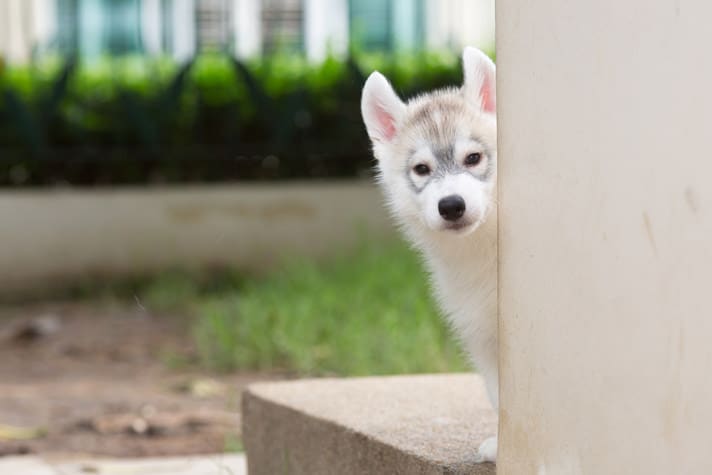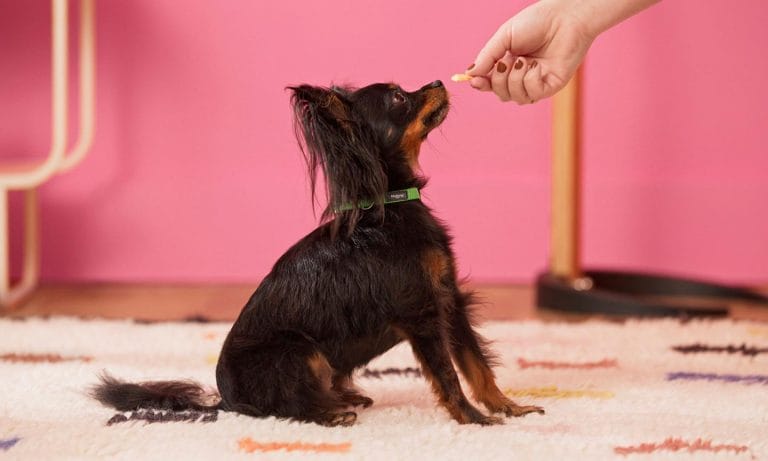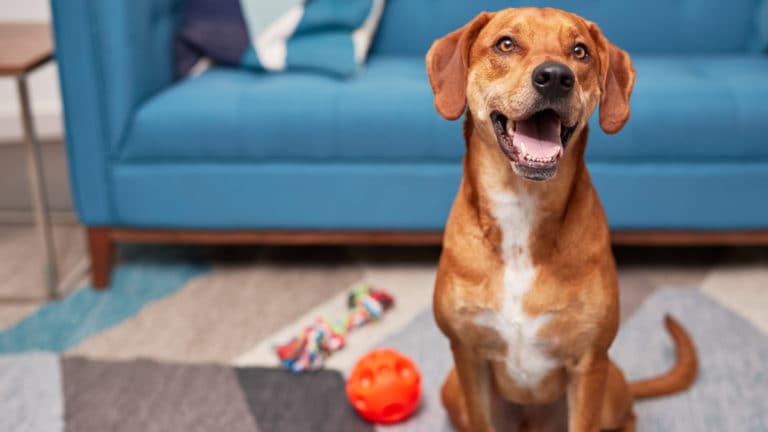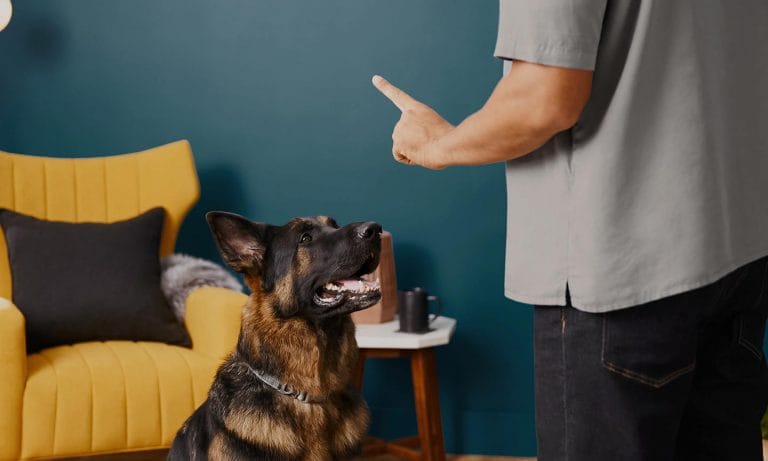You are about to begin Puppy Class 101. Rule No. 1: The puppy must learn that you are now the alpha dog and his new pack leader. Rule No. 2: You have to teach him in a manner he will understand (sorry, barking just won’t do it.). Remember always that he knows nothing about human standards of behavior.
Word Association
Use the same word (command) for each behavior every time you teach it, adding food rewards and verbal praise to reinforce the positive. The puppy will make the connection and will be motivated to repeat the behavior when he hears those key words. For example, when teaching the pup to potty outside, use the same potty term (“Go potty,” “Get busy” or “Hurry up” are commonly used) each time he eliminates, adding a “Good boy!” while he’s urinating. The pup will soon learn what those trips outside are for.
Timing
All dogs learn their lessons in the present tense. You have to catch them in the act (good or bad) in order to dispense rewards or discipline. You have three to five seconds to connect with your puppy or he will not understand what he did wrong. Thus, timing and consistency are your keys to success in teaching any new behavior or correcting bad behaviors. Successful puppy training depends on several important principles:
- Use simple one-word commands and say them only once. Otherwise the puppy learns that come (or sit or down) is a two- or three-word command.
- Never correct your dog for something he did minutes earlier. Three to five seconds, remember?
- Always praise (and offer a treat ) as soon as your puppy does something good (or stops doing something naughty). How else will the puppy know he’s a good dog?
- Be consistent. You can’t snuggle together on the couch to watch TV today, then scold him for climbing on the couch tomorrow.
- Never tell your dog to come, then correct him for something he did wrong. He will think the correction is for coming to you. (Think like a dog, remember?) Always go to the dog to stop unwanted behavior, but be sure to catch him in the act or your correction will not be understood.
- Never hit or kick your dog or strike him with a newspaper or other object. Such physical measures will only create fear and confusion in your dog and could provoke aggressive behavior down the road.
- When praising or correcting, use your best doggie voice. Use a light and happy voice for praise, and a firm, sharp voice for warnings or corrections. A whiny “No, No” or “Drop that” will not sound convincing, nor will a deep, gruff voice make your puppy feel like he’s been a good fellow. Likewise, use your own voice when talking to your dog—don’t baby-talk.
Your dog also will respond accordingly to family arguments. If there’s a shouting match, he will think that he did something wrong and head for cover. So never argue in front of the kids—or the dog! Despite the Husky’s powerful appearance, he is a soft dog who will not respond to harsh training methods or corrections. Puppy kindergarten and continued lessons in obedience are the best course to combating the Husky’s stubborn streak.
Training Games for Puppies
Puppy games are a great way to entertain your puppy and yourself, while subliminally teaching lessons in the course of having fun. Start with a game plan and a pocketful of tasty dog treats. Keep your games short so you don’t push his attention span beyond Husky-puppy limits. Huskies get bored with too much repetition.
Puppy Catch-Me
This one helps teach the come command. With two people sitting on the floor about 10 or 15 feet apart, one person holds and pets the pup while the other calls him, “Puppy, puppy, come!” in a happy voice. When the puppy comes running, lavish him with big hugs and give a tasty treat. Repeat back and forth several times—don’t over do it. You can add a ball or toy and toss it back and forth for the puppy to retrieve. When he picks it up, praise and hug some more, give him a goodie to release the toy, then toss the ball back to person number two. Repeat as above.
Hide And Seek
Another game that teaches the come cue. Play this game outdoors in your yard or other confined safe area. When the pup is distracted, hide behind a tree. Peek out to see when he discovers that you are gone and comes running back to find you (trust me, he will do that). As soon as he gets close, come out, squat down with arms outstretched and call him: “Puppy, come!” This is also an excellent bonding aid and teaches the puppy to depend on you.
Where’s Your Toy?
Start by placing one of his favorite dog toys in plain sight and ask your puppy, “Where’s your toy?” and let him take it. Then place your puppy safely outside the room and place the toy where only part of it shows. Bring him back and ask the same question. Praise highly when he finds it. Repeat several times. Finally, conceal the toy completely and let your puppy sniff it out. Trust his nose—he will find his toy. Husky puppies love to have fun with their people. Games are excellent teaching aids, and one of the best ways to say “I love you” to your Husky.
Posted by: Chewy Editorial
Feature image: Shutterstock
Share:









